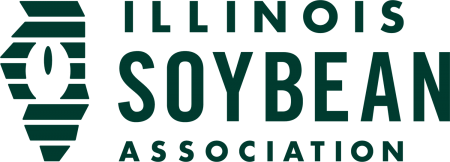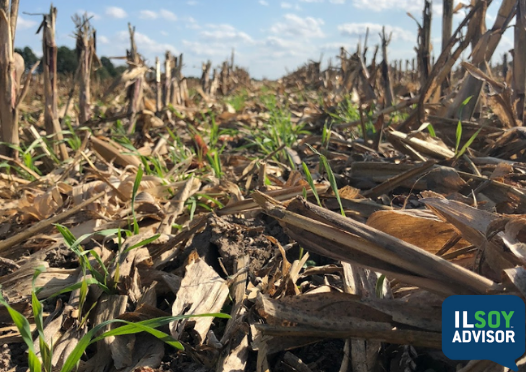ILSOYADVISOR POST
Cover Crops and Conservation
Soil Health Action Plan:
- Cover crops help solve soil erosion and nutrient loss issues on Tom Kentner's farm
- Conservation tillage supports healthy soil
- Soil and tissue testing are tools in Kentner’s belt to evaluate the health of his soil
- Healthy crops come from healthy soil
Tom Kentner and his wife, Susan, farm more than 1,200 acres of corn and soybeans with their son, Alex. The family operation near Danville, Illinois, is deep in the Lake Vermillion Watershed, so sustainability is top of mind to protect downstream water quality.
Cover crops and minimum tillage practices help Kentner achieve his goal of keeping nutrients out of the watershed and in the soil where it should be.
“With our no-till and strip till practices we’re able to conserve our soil as well as our nutrients,” Kentner says.
Cover Crops
Kentner first started with cover crops almost 10 years ago by utilizing a cost share program from his local Soil and Water Conservation District. He plants a variety of cover crops to help promote microbial activity in the soil.
In addition to promoting better soil biology, Kentner says cover crops have increased the soil’s water retention capacity. With heavier rain events occurring in short time frames more frequently, cover crops and minimum tillage help conserve soil and nutrients.
Conservation Tillage
A normal cycle at Kentner’s farm includes strip tilling corn, putting the strips in in the fall and injecting the potash into the strip at this point. During spring corn planting, he applies phosphorus (P) and potassium (K). Twenty percent of their nitrogen (N) goes on at planting time and the rest is side dressed. Soybeans are 100 percent no-till and planted in 15-inch rows.
This minimal disturbance of the soil helps promote earthworm activity, which is good for the soil. “If we have a healthy soil, we’re going to have a healthy crop,” Kentner says.
Kentner uses soil samples to check nutrient needs. He has also started testing plant tissue for nutrient levels. Kentner says tissue testing is just another tool in his belt to help him solve problems in his field and make sure plants have what they need to reach their full yield potential.
Although always conservation minded, Kentner’s five grandchildren now provide even greater motivation to be a good steward of his land and leave something for the next generation to build on.





Comments
Add new comment